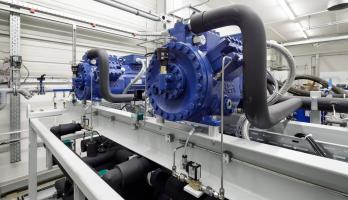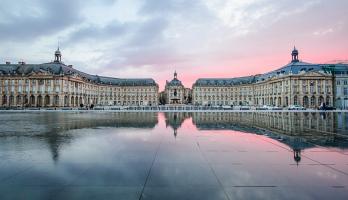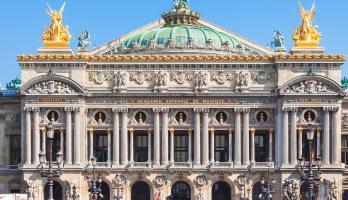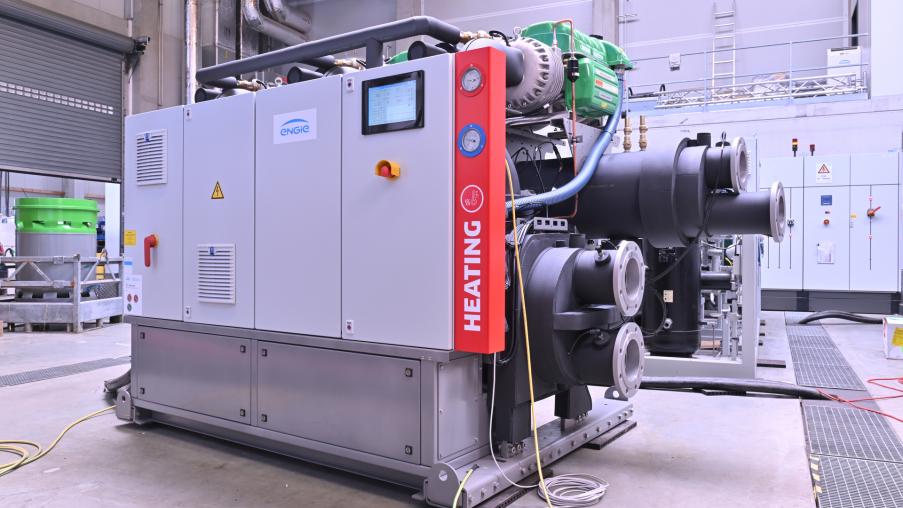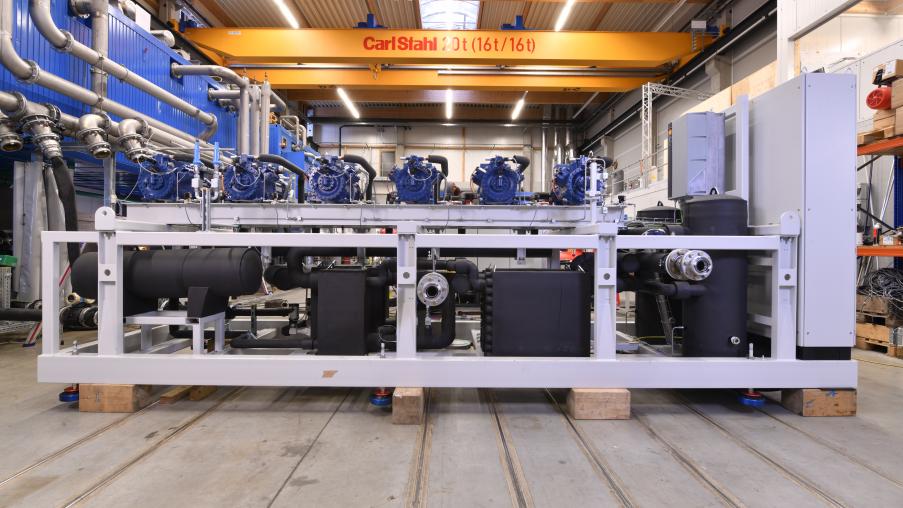
Cooling networks and heating networks
Essentially, cooling and heating networks are a community-based solution that play a key role in the sustainable energy sector – and their importance will only increase in future. Local cooling and heating technology systems are able to satisfy the requirements of local energy networks. Our products meet these demands with maximum energy efficiency, power and sustainability.
For a sustainable future: cooling networks
With the climate becoming warmer overall, the need to cool buildings in cities and urban districts to a pleasant temperature is increasing. Cooling networks are a key component of innovative energy concepts based on sector coupling and the integration of renewable energies. That’s because they supply entire districts with cooling generated at a central point. As district cooling generation is considerably more efficient than conventional small air-conditioning systems, this method of keeping buildings cool reduces energy consumption and saves CO2.
Our solutions for cooling networks show their strengths on a megawatt scale in particular. When dimensioned to operate on a scale this large, the QUANTUM Power chiller, for one, proves especially energy-efficient and reduces energy costs. This, in turn, improves economic performance, and the savings can be passed on to end consumers.
What makes cooling networks so visionary? It’s quite simple: constant monitoring means they provide a stable, reliable energy supply and allow regional autonomy, unlike other energy industry solutions. At the same time, these technologies continue to evolve and help reduce carbon emissions, playing their part in helping to slow climate change.
The principle of district cooling is similar to that of district heating, only the direction has been reversed. The chiller cools the water down at a central point, then distributes it to customers through a piping system. Once it arrives, the water absorbs heat from the building climate control system and returns it to the chiller through a second line. The cycle then starts over again.
This allows
- Improved energy efficiency
- Lower emissions
- Reduced energy consumption
- Lower space requirements
There are already many cities in Europe that use district cooling as an environmentally friendly method of climate control. The growing political pressure to find climate-friendly solutions will only increase the significance of district cooling in future.
ENGIE Refrigeration will ensure that you are perfectly prepared for this by being a partner by your side, one that can advise you about all solutions related to cooling technology.
For a sustainable future: heating networks
Heating networks for supplying heat play a strategic role in the heating transition. This is why they will be successively expanded and decarbonised at the urban and municipal level over the next few years. Large heat pumps are the key technology when it comes to replacing fossil fuel-fired heating technology with the expansion of climate-neutral heating networks.
Whether in densely built urban areas or suburban districts and estates, our powerful and highly efficient large heat pumps provide a perfect solution for the sustainable decarbonisation of your heating networks. Our models are equally suitable for the integration of large natural heat sources, and use industrial waste heat with a high energy potential at a low temperature level. Ideally, they are operated using green power – no greenhouse gas emissions means greater sustainability.
In areas with high specific heat requirements in particular, large heat pumps are able to provide an efficient supply of heating generated on the basis of electricity. This allows them to make a sustainable and economically effective contribution to decarbonisation of the heating supply.
Invest in a sustainable, climate-friendly means of heat generation that you can rely on for the long term – by investing in our heat pumps! After all, our models with supply temperatures of up to 90 degrees Celsius are suitable for use as a monovalent heat generator in heating networks that supply existing buildings.
Because they use the natural refrigerant CO2 or the environmentally friendly, low-GWP refrigerant R-1234ze, our heat pumps ensure that direct emissions from your system are very low. What is more, they will ensure you aren’t dependent on conventional fuels such as oil and gas, the prices of which fluctuate drastically, or affected by rising CO2 costs.
Energy efficiency has always come first for ENGIE Refrigeration. This is why our heat pumps operate using the ‘Efficiency First’ principle: our machines exceed the requirements in the Ecodesign Directive. Investments are similarly recouped within a very short period of time. In addition, the new federal fund for efficient heat networks (BEW) opens up attractive funding opportunities such as grants to help cover the operating costs of large heat pumps.
Water-water heat pumps aren’t just considered the most efficient heat pumps. They continue to use renewable energies such as geothermal energy as energy sources, and are considered 100 per cent regenerative and therefore environmentally friendly heat generators. In contrast to local heat pumps in the lower capacity ranges, our large heat pumps can exploit large, natural sources of heat as well as industrial waste heat with a high energy potential at a low temperature level. Sources of heat like this are often impossible for individual customers to tap into – either due to their size or their distance.
We pay particular attention to compact dimensions and low noise levels when designing our heat pumps. This makes it easy to discreetly integrate the machines into the landscaping concept in your residential district with green spaces, parks and ponds. What’s more, they are ideal for set-up in densely built urban areas with limited installation spaces and strict regulations in relation to noise and architectural requirements – such as building protection orders.
An extremely compact, lightweight and straightforward design for our heat pumps reduces the work involved in installation and maintenance, saves space, and facilitates integration into utility rooms.
When it comes to heat generation, fossil fuels such as oil, natural gas and coal still dominate the European market. Phasing out fossil fuels from the energy mix will lead us all to a carbon-neutral future. Heating networks can make a decisive contribution to supplying urban buildings with climate-neutral heat by 2045.
By offering ‘zero carbon transition as a service’, we will help you to prepare your city, your municipality or your residential district for the future. An efficient heating supply, ideally generated without producing greenhouse gases, is our way of making a sustainable and economically effective contribution to decarbonisation.
Products from ENGIE Refrigeration
Special requirements demand special machines. This is the insight behind the sophisticated machine concept used for our SPECTRUM Water heat pump. It has no problems with a condenser leaving water temperature of up to +65 degrees Celsius and a nominal heat output of up to 3,100 kilowatts – making it ideal for integration into communal and urban heating networks.
What does this mean for users? Let’s see: the innovative water-water heat pump made by ENGIE Refrigeration allows you to rest assured of both a high-output and a highly efficient supply – using top technology made in Germany. You’re also banking on heating with a future! As an ecologically sustainable alternative to conventionally operated boilers, SPECTRUM Water contributes to the decarbonisation of heat generation and frees you from the yoke of rapidly increasing commodity prices.
This ensures the future viability of complex heating networks, along with entire districts and housing developments, in terms of climate targets. After all, our SPECTRUM Water heat pump really does satisfy these specific industry requirements:
- Heat carrier temperatures of up to 65 degrees Celsius and thermal outputs of up to three megawatts allow integration into communal and urban heating networks, whether in a monovalent form or as part of an energy mix with other regenerative heat generators
- ‘Efficiency first’: highly efficient with industry-benchmark seasonal efficiency values in heating mode (SCOP 47/55 to 6.18)
- Smart grid interface for sector coupling (EE integration) and for network-friendly system operation
- Maximum operational reliability due to redundant compressor distribution and high-quality technology components
- Oil-free machine design for low-maintenance, reliable and consistently high-efficiency system operation
- Modular condenser design allows coverage of large heating network differences of up to 15 Kelvin
More information about the performance characteristics and advantages of the SPECTRUM water heat pumps can be found here.
With a refrigeration capacity of up to 8,500 kilowatts, the QUANTUM Power is the perfect chiller for district cooling networks. Its compact and modular design gives it the flexibility to adapt to any requirements and handle even the most complex on-site conditions. As well as the efficient design, maximum operational reliability and special features that all QUANTUM chillers share, the QUANTUM Power is also distinguished by the following three characteristics:
- Maximum energy efficiency: The QUANTUM Power achieves especially high levels of energy efficiency at high ratings.
- Innovative compressor design: The QUANTUM Power achieves a high EER under full load and part load due to its exceptional compressor design. What’s more, the turbo machine incurs only minimal internal losses, while the ESEER remains at the same constant high value.
- Comparatively low costs of operation: The QUANTUM Power unleashes its full potential in a district cooling network. You save money thanks to lower energy costs in the megawatt range. This has a positive side effect: you can pass your savings directly on to your end consumers.
Would you like to learn more about the QUANTUM Power? You can find all the relevant information here: QUANTUM Power
The thermeco2 high-temperature heat pump raises the temperatures of free regenerative ambient heat sources, such as geothermal energy, groundwater, industrial waste heat and waste water, to an especially high level of 90 degrees Celsius. A real advantage is the environmentally friendly, natural refrigerant CO2, also referred to by its technical designation R-744. This makes this product the ideal solution for all cities and municipalities that aim to prepare for a sustainable future.
Those who opt for the thermeco2 high-temperature heat pump are investing in high-quality industry design made in Germany. The key benefits for users are:
- Warm water temperatures of up to 90 degrees Celsius without additional heating by means of a gas burner or heating element
- Many power levels between 90 and 1,000 kilowatts for indoor installation
- Maximum efficiency due to simultaneous generation of heating and cooling
- Combines stability, compact design and high-end technology components into a robust industrial design solution
Would you like to learn more? More detailed information about the thermeco2 high-temperature heat pump can be found here.
